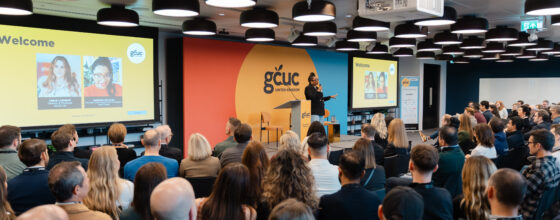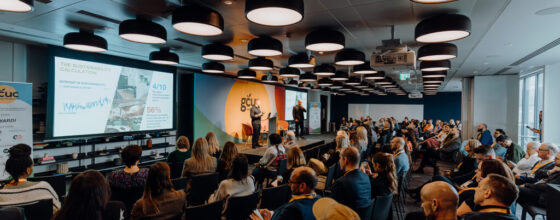Why Yahoo! is Actually Right – and Why Home Officing Hasn’t Worked

Yes, Marissa hit the panic button, and Yahoo’s new ban on “working from home” has ignited a huge firestorm from a long-smoldering debate over how to manage worklife balance and workplace productivity. However, pitting working from home against working from a central headquarters office misses the point. Neither the home office nor the centralized HQ is the complete answer anymore. Worklife, has become infinitely more interesting and requires a more thoughtful approach, since knowledge workers now choose how, when and where they work based on what they need to accomplish. Here’s why:
Remember when Telecommuting and Home Officing were supposed to be the “future of work”? These revolutionary ideas were going to redefine work and transform the quality of our lives. But after 20 years of expectation, it hasn’t happened. Why?
Today, less than 2% of US knowledge workers report working from home full-time, and a majority, when given the option, say they would rather not. Even two recessions, which spawned countless corporate work-at-home initiatives, did not prove to be a catalyst for change, despite the potentially huge real estate cost savings to corporations.
The Workplace of the Past.
Back when work was a place, company headquarters always had a centralized and hierarchical spatial design. Workplace design was a class-based system. By rank, every executive, manager or worker got a specific type and amount of space. Space was part of each worker’s identity. Work’s space design legacy supported business processes in which mail and interoffice memos were physically delivered to inboxes on each worker’s desktop. To be away from the office too long meant work would physically and noticeably “pile up”. Suit jackets were regularly left on the backs of chairs as if to say, “even though I am away from my workspace, I am not far away”. Naturally, working at home, far away from the decision makers and mentors left people vulnerable and easily overlooked, if not disregarded. Working from home also meant fewer opportunities to benefit from serendipitous encounters, or to enjoy meaningful social inclusion. With managers using presence and proximity as a measure of employee performance, it’s no wonder working at home never got going.
The Present Workplace.
Yes, the old days were rough for home officing, but everything has changed now, right? It was reasoned that with investment in better communications, connectivity and collaboration tools, workers could work from home so they could reduce commute times, improve life balance, wellness and productivity. Renewed interest in home officing has also been fueled with establishment of corporate sustainability initiatives aimed at reducing carbon emission. Great then! Just add better technology to let workers collaborate; add reliable mobile coverage, online and video collaboration, document sharing and ubiquitous internet connectivity. Add vast, free, online social and business networks to post to, check-in with, learn from, video conference with and follow others on…all without ever having to shake a hand. Hey workers can now even go to the water cooler or industry conferences virtually.
So we’re done? Not quite. What about addressing the solitary nature of working from home, safety and security issues, work life integration challenges, management resistance, Low T? What about losing the collective value of mentoring and apprenticeship? What about fostering peer equity so that all ideas are judged on their merit, not impaired by a culture that disenfranchises remote workers? How about offering great work environments to attract the best talent regardless of geographic location? How about ensuring an organization can achieve real estate cost savings while supporting an array of measurable workplace alternatives that meet corporate service level standards from IT and IP protection to sustainability and ergonomics?
Today, alternative workplace choices are in the hands of employees. Workers are choosing their workspace, without regard for policy or best practice. It’s the Wild West. Companies are being forced to move more quickly to establish distributed workplace models that can centrally support, measure and manage remote work activities. So,we’re not there yet.
The Workplace Yet to Come.
Companies will need to follow their workers’ desires for decentralized work, but will this usher in a home officing revolution? I wouldn’t wait on that. Sure, knowledge workers will still get work done at home outside of regular business hours, but why should employees dedicate valuable personal real estate for company use, pay to heat and cool their homes during the day for one person, allow work to encroach on family life and worst of all be relegated to sit in cheap chairs, in poor light, in the solitary confines of an extra room, except when interrupted by deliveries, errands and other welcomed distractions?
The Distributed Work Era is under way. Work-life after the centralized HQ workplace is now being brought to reality through significant commercial investment and entrepreneurial innovation. Forward thinking office, retail and hotel property owners, corporate real estate managers, IT/infrastructure managers, designers, and technologists are laying the foundation to support a continuum of workplaces. The world of work yet to come will be physically decentralized, but managed centrally. This can be accomplished through use of branded networks of on-demand workplace providers. Such workplace providers will consider employees and the company as their customers. Work locations near home, but not in the employee’s home, will be the dominant form, reducing commutes and improving work/life separation. These networks of workplaces will be designed to support the collaboration and meeting space needs of a growing mobile and remote workforce, with provisioning and space reservation technology to enable workers to seamlessly traverse suburban coworking facilities, urban collaboration centers, business centers, hotels and of course redesigned corporate facilities. Such high performance workplaces will provide safe, secure and friendly service along with the social interaction and sense of community most high performing workers crave.
An exciting array of consumerized workplace alternatives will support the Distributed Work Era, offering branded workplace networks to suit every worker’s need for workplace portability, social inclusion and service, while providing for centralized corporate measurement and management. The privilege of working in this set of high performance workplace environments will empower and drive productivity from the most valuable and trusted workers. As a result, well supported remote work privileges may soon supplant the corner office as the ultimate a symbol of workplace achievement.
Yahoo! Now you can defend your misguided decision and yet still offer opportunity for your most valued employees to traverse the full spectrum of workplaces, even working at home as a last resort.









